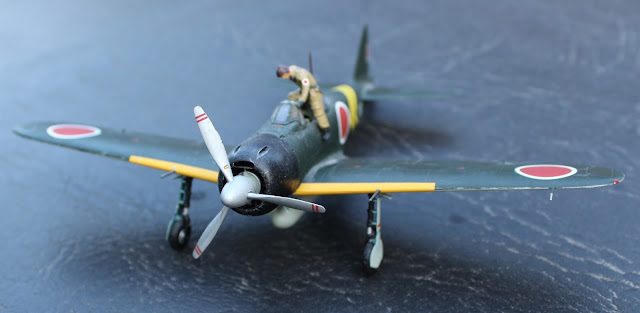In January of 1973 the Burlington Northern received their
only order from Electro-Motive Division (EMD) of the SW1500. All other groups
of the SW1500 on the Burlington Northern roster came from its predecessor,
Great Northern (GN) and later in 1980 from the Saint Louis and San Francisco
(SLSF). The January EMD order (order number 71605) saw fifteen new switchers
numbered from 310-324. For this project I have selected road number 320 because
I have come across a photo of it in Whitefish, Montana during the 1980’s which
is the era and region I model most of my BN equipment, so a win-win for me on
this one. A photo of this locomotive can be found on railpictures.net.
 |
| Most of the parts need are here along with the Undec locomotive |
I started
with an undecorated Athearn “blue box” kit it was bought it off of a friend of mine
along with a few detail parts. The model came with a DCC decoder that was
partially finished, only the motor and truck leads were attached. This will be
changed to a DH165 from Digitrax but that is for a later paragraph and part. First items
to replace were the truck side frames for the proper style for this particular
locomotive. The model came with Flexicoil trucks side frames and with this EMD
order the Burlington Northern opted for the AAR-B trucks, like many of their
other switcher series models. The kit used is from Smokey Valley and each side
frame consists of one frame, two bearing caps, and the air brake cylinder. As I
go along with this project these will receive some attention with extra
details, including a speed recorder, airlines, and sanding lines with these
details, the trucks will really look the part underneath this locomotive.
The detailing
of the shell starts with the front of the locomotive. The original coupler
buffer plate and MU hose holders were remove and replaced with a proper Detail
West buffer coupler plate and 17” straight grab irons to hold back the MU
cables. Next, the MU hoses were installed. I went with the now discontinued
Overland brass MU cables. I like the look and the strength theses brass parts
have, I plan on using them on future projects until I run out of them. It has
been awhile since I have worked on any major HO scale projects of this caliber,
with that said, I decided to try out a Cannon and Company safety tread kit for this
locomotive. In continuing with the detailing the front of the locomotive, the
solid steps originally on the shell were cut off and replaced with see through
ones from the Cannon and Company kit. With a pleasant surprise, I was able to install
them without any major issues.
Lastly for this first part, the coupler cut
lever was installed with the plastic brackets from Details Associates. The
holes were drilled in and the brackets were carefully pushed through the cut
lever bar and slide into place, once all four were slid though the holes on the
pilot of the shell received a dab of plastic model glue and given a chance to
become slightly tacky. Once tacky the cut lever bar was carefully set into
place and allowed time to dry before it was handed to install the air hose on
the front of the model by simply drilling a hole and attaching it with CA glue.
Before, I completed the front of the model I installed the beginning of the
safety tread piece with CA glue. There are still some small details to install
on the front before I can call it finished but it will be saved for the next
part of this series, stay tuned for the next part where I tackle the long hood
and air tanks on the SW1500. Happy modelling! TRWBM


















